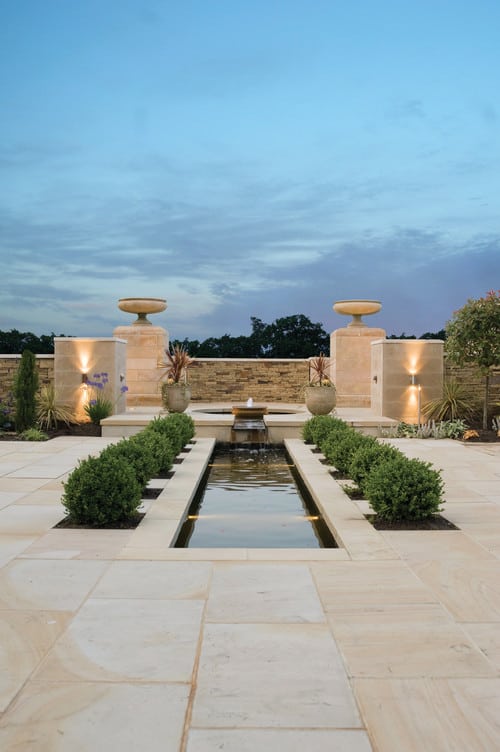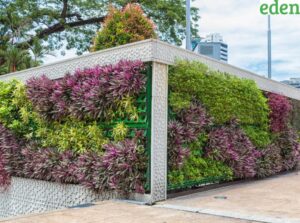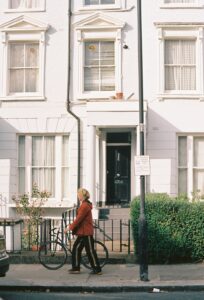Balancing Act: Achieving Beauty And Function In Urban Landscaping
Considerations in Landscape Design
Functionality in Design
Functional landscape design involves careful consideration of various factors to ensure that the outdoor space not only looks visually appealing but also serves its intended purposes effectively. When designing a landscape, several key considerations need to be taken into account to achieve functionality.
One important requirement in functional landscape design is understanding the specific purpose of the outdoor area. Whether it’s a public space, a residential garden, or a commercial property, the design should align with the primary function of the space. This involves determining how the area will be used by people and ensuring that the layout and features support those activities.
Additionally, practical considerations such as the practicality of Chinese hedge plants, the use of native plants, and the incorporation of water features should be evaluated. Native plants are well-suited to the local climate, require less maintenance, and promote natural wildlife habitats. Water features can enhance the aesthetic appeal of the space while also providing environmental sustainability through efficient water use.
Moreover, balancing the visual aspects with the functional areas is crucial. Good design strikes the right balance between form and function, creating a harmonious flow that guides users through the space. Elements such as green spaces, street furniture, and art forms should not only be visually pleasing but also serve a purpose in enhancing the overall user experience.
Furthermore, considering the surrounding environment and the needs of the residents is key to successful designs. The landscape should complement the existing buildings and natural surroundings, creating a seamless integration that enhances the overall space. Seeking feedback from residents and incorporating their preferences can help ensure that the design meets their needs and preferences.
In conclusion, functional landscape design is an intricate dance between balancing beauty and practicality. By considering the specific purpose of the space, incorporating sustainable practices, and aligning the design with the needs of users, landscape designers can create outdoor areas that are not only visually stunning but also highly functional.
Aesthetics in Design
When considering aesthetic landscape design, landscape designers must carefully balance beauty with functionality to create successful designs that enhance the overall space. This delicate balance involves seeking feedback from residents and taking into account the practicality of elements such as water features, green spaces, and street furniture.
One of the primary considerations for aesthetic landscape design is the specific purpose of the outdoor areas. Designers must apply aesthetic principles to create a visually pleasing environment that also serves the functional areas effectively. Aesthetic principles guide users through the outdoor space, creating a sense of harmony and balance.
In achieving a perfect blend of aesthetics and functionality, it is essential to consider environmental factors such as the local climate and the use of native plants. Designing with environmental sustainability in mind not only benefits natural wildlife but also contributes to the overall well-being of the surrounding environment.
Furthermore, practical considerations such as the construction process and maintenance requirements play a crucial role in creating aesthetically pleasing and functional landscapes. By incorporating reversible design elements and employing best practices in building processes, designers can ensure that the outdoor space remains versatile and adaptable to changing needs.
In conclusion, the art of aesthetic landscape design involves an intricate dance between visual aspects and the primary functions of the space. By striking the right balance between beauty and practicality, designers can transform outdoor areas into works of art that enrich the lives of people and contribute to the beauty of the urban environment.
Balancing Functionality and Aesthetics
Achieving a harmonious balance between functionality and beauty in urban landscaping is a delicate yet crucial task that requires careful consideration from landscape designers. One key aspect to consider is the practicality of incorporating elements such as water features or green spaces, which not only serve a specific purpose but also add aesthetic value to the overall space.
To strike the right balance between aesthetics and functionality, designers must apply design principles that take into account the needs of the people who will be using the outdoor areas. Seeking feedback from residents can help ensure that the design meets their practical considerations while also enhancing the visual aspects of the space.
In addition, incorporating environmentally friendly practices such as using native plants and considering the natural wildlife can contribute to the overall environmental sustainability of the design. This integration of environmental factors into the design process can create functional landscapes that not only look visually appealing but also support the surrounding environment.
Ultimately, achieving a successful balance between beauty and function in urban landscaping requires a thoughtful and intricate dance between practical considerations and aesthetic principles. By following best practices and considering the unique characteristics of the local climate and environment, designers can create outdoor spaces that not only serve their primary function but also stand as works of art in their own right. In this way, the balancing act of achieving beauty and function in urban landscaping can result in truly exceptional and sustainable designs.
Aesthetic Principles in Landscape Design
Importance of Aesthetics in Design
Why are aesthetics crucial to landscape design?
Aesthetics play a critical role in landscape design as they are essential in creating visually appealing outdoor spaces that also serve functional purposes. Landscape designers understand the delicate balance required to achieve a perfect blend of beauty and functionality in urban landscaping. The visual aspects of a design not only enhance the overall space but also contribute to the well-being of the people who interact with it.
A well-designed landscape not only pleases the eye but also considers practical considerations such as the specific purpose of the space, environmental sustainability, and the surrounding environment. By incorporating aesthetic principles into their designs, landscape designers can create outdoor areas that are like works of art, where every element serves a purpose and adds to the beauty of the space.
Moreover, aesthetics in landscape design can guide users through outdoor spaces, making them more inviting and enjoyable. By using native plants, water features, green spaces, and street furniture strategically, designers can create functional landscapes that are not only visually appealing but also environmentally friendly.
In essence, aesthetics are not just about making a space look pretty; they are a crucial element in ensuring that urban landscapes are not only beautiful but also practical, sustainable, and enjoyable for residents. Striking the right balance between beauty and functionality is the key to creating successful designs that enhance the quality of life in urban environments.
Guiding Aesthetics in Design
Aesthetic principles play a crucial role in guiding landscape designers towards creating harmonious and visually appealing outdoor spaces. These principles encompass a range of considerations that help strike a delicate balance between beauty and functionality in urban landscaping.
One key principle that landscape designers follow is the incorporation of specific purpose in their designs. Each element within a landscape is carefully chosen and placed to serve a designated function, whether it be providing shade, promoting relaxation, or enhancing the overall aesthetics of the space. This ensures that every aspect of the design contributes to the primary function of the area while also adding an aesthetic appeal.
Another important consideration is the use of native plants in landscaping projects. By incorporating plants that are indigenous to the region, designers not only promote the natural wildlife but also create landscapes that are better suited to thrive in the local climate. This practice not only enhances the visual appeal of the space but also contributes to environmental sustainability by reducing the need for excessive maintenance and watering.
Furthermore, the balance beauty with functionality is a critical aspect of landscape design. Designers must carefully consider the practicality of Chinese hedges, the placement of water features, and the integration of street furniture to ensure that the space not only looks visually appealing but also serves the needs of the people who will be using it. Achieving this balance requires a keen eye for detail and an understanding of how to guide users through the space effectively.
Overall, aesthetic principles in landscape design are focused on creating functional landscapes that are both visually stunning and serve a specific purpose. By incorporating these principles, landscape designers can achieve successful designs that not only enhance the surrounding environment but also improve the quality of life for residents and visitors alike.
Utilizing Contrast and Rhythm
Utilizing Contrast and Rhythm: Introducing Variety in Urban Landscaping
In the realm of urban landscaping, the interplay of contrast and rhythm serves as a powerful tool for creating visually captivating and functionally efficient outdoor spaces. Contrast, in particular, plays a pivotal role in introducing variety into a landscape. By juxtaposing elements such as color, texture, shape, and size, landscape designers can create dynamic compositions that engage the eye and evoke interest. For instance, the practicality of incorporating a Chinese hedge with its dense foliage and intricate patterns can provide a striking contrast to more open green spaces, adding depth and visual intrigue to the overall design.
On the other hand, rhythm in landscaping serves to establish a sense of flow and harmony within the space. Just as in music where rhythm guides the tempo and movement, in landscape design, rhythm dictates the visual pacing and progression as one navigates through the outdoor environment. By repeating certain elements or patterns strategically, such as alternating plant species along a pathway or using rhythmic patterns in the arrangement of hardscape materials, designers can create a sense of cohesion and continuity in the landscape.
Ultimately, the synergy between contrast and rhythm in urban landscaping not only adds aesthetic value but also enhances the functionality of the space. By carefully balancing these elements, landscape designers can create outdoor areas that are as visually appealing as they are practical and enjoyable for people to experience. This delicate balance between beauty and function is where successful designs truly shine, offering residents and visitors alike a harmonious blend of visual interest and practical considerations that cater to the specific purpose and needs of the surrounding environment.
Significance of Scale and Proportion
The role of scale and proportion in landscape design is paramount when striving to achieve a harmonious and visually appealing outdoor space. Landscape designers must carefully consider the size and relationship of elements within the landscape to create a balanced and cohesive design.
Scale refers to the size of objects in relation to the surrounding environment and other elements within the space. It is essential to find the right balance in scale to ensure that each component complements the overall space without overpowering or being overshadowed by other features. For example, in the practicality of Chinese hedge placement, the scale must be carefully considered to ensure it serves its specific purpose without dominating the landscape.
Proportion, on the other hand, deals with the relationship between different components in terms of size, shape, and quantity. Proper proportion helps create a sense of unity and order in the design, guiding users through the outdoor areas with ease. It is crucial to seek feedback from residents and consider the surrounding environment when determining the proportion of elements within the landscape.
Achieving the delicate balance of scale and proportion is like an intricate dance where each element plays a vital role in the overall composition. By applying design principles and best practices, landscape designers can create successful designs that not only prioritize functionality and practicality but also enhance the visual aspects of the space.
In conclusion, scale and proportion are essential elements in landscape design that contribute to the overall balance, beauty, and functionality of urban landscaping. By carefully considering these factors, designers can create outdoor spaces that not only serve their primary function but also serve as works of art that harmonize with the surrounding environment.
Functionality and Practicality in Landscape Design
Emphasizing Functionality
Emphasizing Functionality
In landscape design, functionality plays a crucial role in creating spaces that not only look visually appealing but also serve a practical purpose. The importance of functionality in landscape design cannot be overstated, as it directly impacts how individuals interact with and experience outdoor areas.
One primary reason why functionality is essential in landscape design is that it ensures that outdoor spaces are optimized for their intended use. Whether it be a public park, a residential backyard, or a commercial plaza, each outdoor area has a specific purpose that must be taken into account during the design process. For example, the practicality of incorporating Chinese hedge plants in a particular area may affect the overall accessibility, maintenance requirements, and visual aesthetics of the space. By prioritizing functionality, landscape designers can create outdoor environments that not only look beautiful but also cater to the needs and preferences of the people who will be using them.
When considering the practical aspects of landscape design, several key considerations need to be made. These include the overall space available, the surrounding environment, and the specific requirements of the users. Factors such as the local climate, environmental sustainability, and the growth patterns of native plants all play a role in determining the functionality of a landscape design. Additionally, the inclusion of water features, green spaces, and street furniture can further enhance the usability and enjoyment of outdoor areas.
Ultimately, achieving a delicate balance between beauty and functionality in urban landscaping requires a thoughtful and comprehensive approach. By seeking feedback from residents, applying design principles that guide users through the space, and considering environmental factors, landscape designers can create successful designs that serve both practical and aesthetic purposes. In this intricate dance of balancing act, functionality emerges as a cornerstone of good design, ensuring that outdoor areas not only function effectively but also provide a visually pleasing experience for all who visit them.
Enhancing Functionality Through Layout
Enhancing Functionality Through Layout
In the intricate dance of urban landscaping, the layout and circulation play a crucial role in enhancing the functionality of a landscape design. The way in which pathways, seating areas, and green spaces are organized can greatly impact how a space is utilized by people (‘people’). By strategically planning the placement of elements, landscape designers (‘landscape designers’) can guide users through the outdoor areas (‘outdoor areas’) in a way that maximizes both aesthetic appeal and practicality.
The layout of a landscape design should take into account the specific purpose (‘specific purpose’) of the space and the needs of its residents (‘residents’). For example, incorporating functional areas (‘functional areas’) for activities like seating, social gatherings, or recreational purposes is essential. Additionally, considering practical considerations (‘practical considerations’) such as the circulation of foot traffic, accessibility for all users, and the overall space (‘overall space’) utilization is necessary to create successful designs (‘successful designs’).
By finding the right balance (‘right balance’) between form and function, landscape designers can create functional landscapes (‘functional landscapes’) that not only serve a practical function but also enhance the visual aspects (‘visual aspects’) of the environment. The layout of water features (‘water features’), plant growth (‘plant growth’) patterns, and the inclusion of native plants (‘use of native plants’) can all contribute to the overall functionality and beauty of the design.
Furthermore, the layout of a landscape design should also consider the surrounding environment (‘surrounding environment’) and environmental factors (‘environmental factors’) such as the local climate (‘local climate’) and natural wildlife (‘natural wildlife’). By incorporating environmentally-friendly practices (‘friendly practices’) and sustainable design principles, landscape designers can create spaces that not only look beautiful but also support biodiversity and ecological balance.
In conclusion, achieving a delicate balance (‘delicate balance’) between beauty and function in urban landscaping requires careful attention to layout and circulation. By applying design principles (‘apply design principles’) that prioritize functionality while also considering the visual appeal of the space, landscape designers can create works of art (‘works of art’) that are not only visually stunning but also highly practical and enjoyable for users.
Understanding Zoning for Function
Understanding Zoning for Function
Zoning regulations play a pivotal role in shaping the functionality of urban landscapes. In essence, zoning refers to the division of land into different designated areas where various land uses and developments are permitted. This zoning framework is put in place by local authorities to regulate the use of land and the type of structures that can be built in specific zones.
Zoning significantly influences the practical use of a landscape by dictating the primary functions that can be served within a particular area. For instance, residential zones are primarily designated for housing purposes, while commercial zones are intended for businesses and retail establishments. This means that landscape designers must adhere to these zoning regulations when planning and designing outdoor spaces to ensure that they align with the intended function of the area.
Moreover, zoning guidelines also impact the placement of various landscape elements such as outdoor seating areas, green spaces, water features, and street furniture. These regulations help ensure that the overall space is utilized efficiently and that the design elements serve a specific purpose within the designated zone.
By understanding zoning regulations, landscape designers can create functional landscapes that not only enhance the visual aspects of an area but also cater to the practical considerations set by local authorities. Achieving a delicate balance between beauty and function in urban landscaping requires careful consideration of zoning requirements to create successful designs that harmonize with the surrounding environment while meeting the needs of residents and visitors alike.



